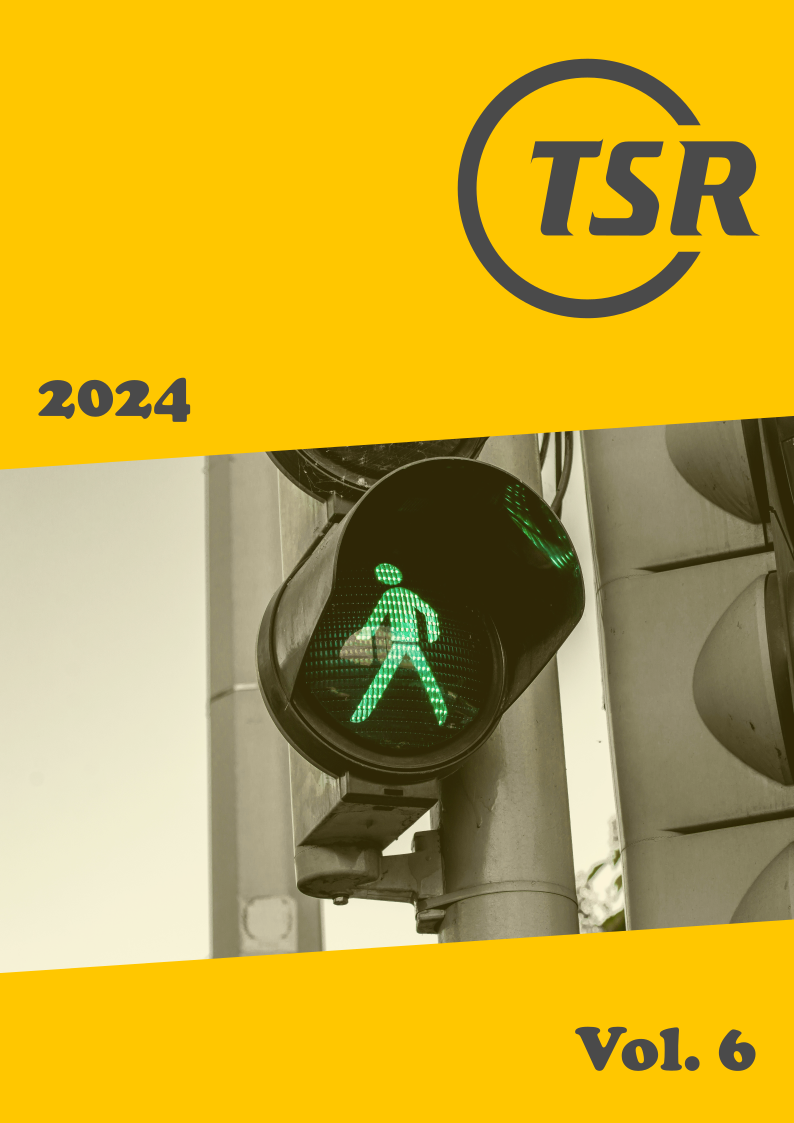A comprehensive approach to evaluation of road safety policy
DOI:
https://doi.org/10.55329/lksd3366Keywords:
evaluation, history, road safety policy, statistical analysisAbstract
This paper outlines a comprehensive approach to the evaluation of road safety policy. An evaluation of road safety policy aims to estimate its effect on the number of traffic fatalities or the number of injured road users. The following main stages of such a study are identified: (1) Analysis of long-term trends for the purpose of developing hypotheses about the effects of road safety policy; (2) Identification of variables describing road safety policy; (3) Identification of confounding variables; (4) Exploratory analysis of statistical models; (5) Comparative analysis of statistical models; (6) Estimation of policy effect and its uncertainty. The approach is illustrated using data for Sweden for 1981–2018. Four variables describing road safety policy were assessed. Only one of them, the length of motorways and 2+1 roads, had a consistent statistical relationship to the number of fatalities. Three models for statistical analysis were compared: a negative binomial regression model, a multivariate ARIMA time-series model, and a least squares linear regression model. The time-series model was clearly the best of the models in terms of various criteria for model quality. According to this model, the number of fatalities in 2018 was 27.6% lower than it would have been without the contribution of the policy variable. It is likely that this estimate is too low. Only a single variable was used as an indicator of road safety policy. The trend term (year count) probably captures part of road safety policy, like the effects of safer cars associated with the renewal of the car fleet. The analyses show that road safety policy in Sweden, as indicated by motorway length, has become more effective after the adoption of Vision Zero than it was before the adoption of Vision Zero. In general, the history of road safety policy cannot be reconstructed in sufficient detail to support an evaluation of which elements of it have been more or less effective. It is, accordingly, not possible to identify any specific set of road safety measures that should be given higher priority in order to make road safety policy more effective.
Downloads
References
Allsop, R. E., N. N. Sze, S. C. Wong (2011), 'An update on the association between setting quantified road safety targets and road fatality reduction', Accident Analysis & Prevention, 43, 1279–1283. DOI: https://doi.org/10.1016/j.aap.2011.01.010
Brüde, U. (1995), 'What is happening to the number of fatalities in road accidents? A model for forecasts and continuous monitoring of development up to the year 2000', Accident Analysis & Prevention, 27(3), 405–410. DOI: https://doi.org/10.1016/0001-4575(94)00062-Q
Bø, O. (1970), 'Trafikkulykker og personskader i Oslo og Akershus 1968', Utvalg for trafikksikkerhetsforskning, Rapport 9.
Elvik, R. (2024), 'The development of a road safety policy index and its application in the evaluation of road safety policy', Accident Analysis & Prevention, 202, 107612. DOI: https://doi.org/10.1016/j.aap.2024.107612
Elvik, R. (2019), 'Updated estimates of the relationship between the business cycle and traffic fatalities', International Transport Forum.
Elvik, R., A. K. Høye (2022), 'Do we know why the number of traffic fatalities is declining? If not, can we find out?', Traffic Safety Research, 2, 000007. DOI: https://doi.org/10.55329/oyhu8693
Elvik, R., T.-O. Nævestad (2023), 'Does empirical evidence support the effectiveness of the Safe System approach to road safety management?', Accident Analysis & Prevention, 191, 107227. DOI: https://doi.org/10.1016/j.aap.2023.107227
Fridstrøm, L. (1999), 'Econometric models of road use, accidents, and road investment decisions. Volumes I and II', Institute of Transport Economics, TØI report 456–457/1999.
Fridstrøm, L. (2015), 'Disaggregate accident frequency and risk modelling. A rough guide', Institute of Transport Economics, TØI report 1403/2015.
Hagen, K.-E. (1993), 'Samfunnsøkonomisk regnskapssystem for trafikkulykker og trafikksikkerhetstiltak', Institute of Transport Economics, TØI report 182/1993.
Hauer, E. (2010), 'Cause, effect and regression in road safety: A case study', Accident Analysis & Prevention, 42(4), 1128–1135. DOI: https://doi.org/10.1016/j.aap.2009.12.027
Hauer, E., J. Bamfo (1997), 'Two tools for finding what function links the dependent variable to the explanatory variable', 10th ICTCT conference, Lund, Sweden, 5–7 November 1997.
Lereim, I. (1984), Traffic accidents and their consequences: a study on injured road-users treated at the Regional hospital of Trondheim, (Trondheim, Norway: Tapir Forlag).
Lund, J. (2019), 'Helsevesenbasert skaderegistrering som verktøy for å forebygge trafikkulykker', Trygg Trafikk.
Vadeby, A., Å. Forsman (2018), 'Traffic safety effects of new speed limits in Sweden', Accident Analysis & Prevention, 114, 34–39. DOI: https://doi.org/10.1016/j.aap.2017.02.003
Wegman, F., R. Allsop, C. Antoniou, R. Bergel-Hayat, R. Elvik, S. Lassarre, D. Lloyd, W. Wijnen (2017), 'How did the economic recession (2008-2010) influence traffic fatalities in OECD-countries?', Accident Analysis & Prevention, 102, 51–59. DOI: https://doi.org/10.1016/j.aap.2017.01.022
Published
How to Cite
Issue
Section
License
Copyright (c) 2024 Rune Elvik

This work is licensed under a Creative Commons Attribution 4.0 International License.
Funding data
-
Trafikverket
Grant numbers 5448








